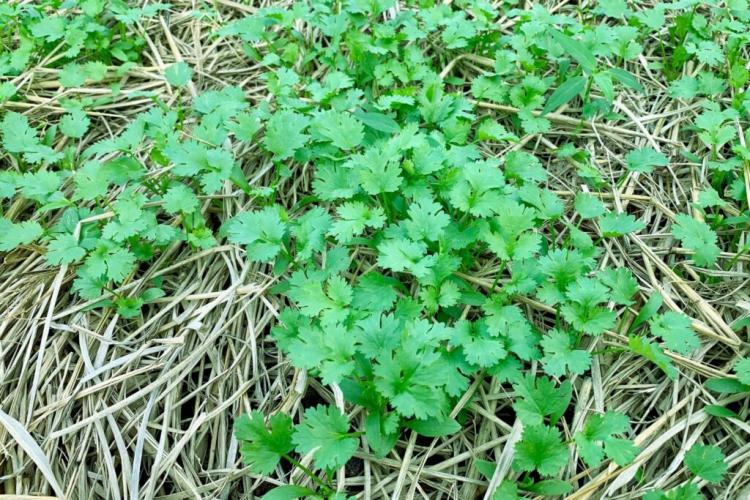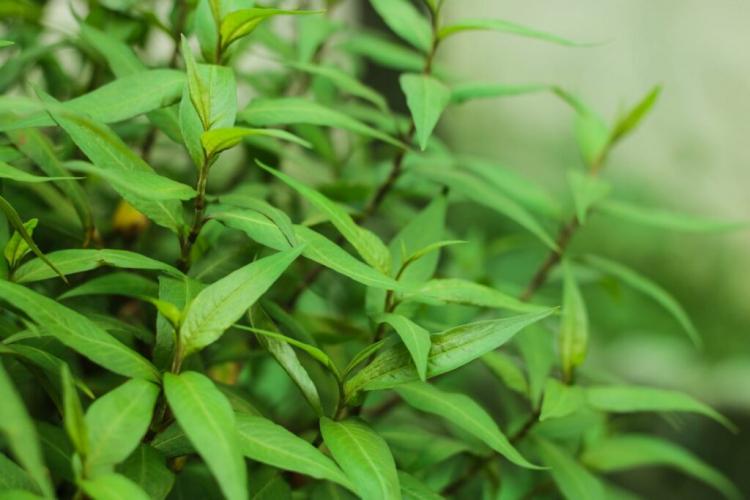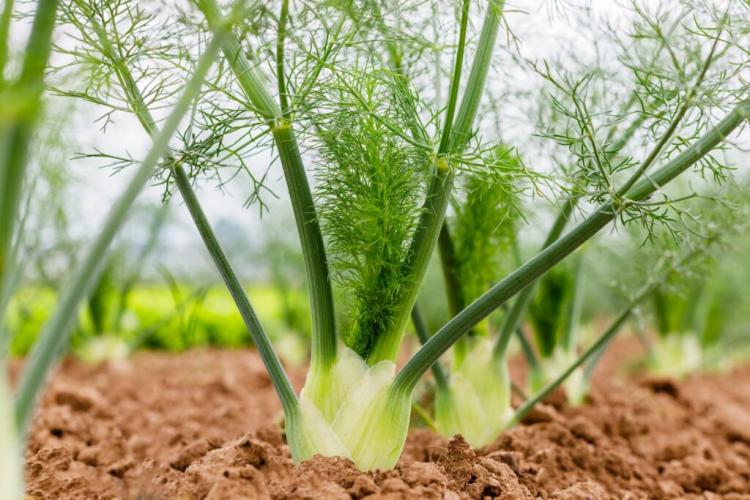Caring for coriander: cutting, pouring & overwintering
Coriander, an ancient medicinal herb and aromatic herb, rewards with good care with lots of aromatic leaves and seeds. But when and how should you cut coriander and is coriander hardy?

Coriander needs sufficient moisture, especially as a young plant [Photo: Olga Miltsova / Shutterstock.com]
Coriander ( Coriandrum sativum ) is an easy-care herb with a peppery, aromatic taste. We show you what to look out for when fertilizing and caring for coriander.
Caring for coriander: water and fertilize properly
Table of Contents
The real coriander is quite undemanding in terms of care. As a young plant, you should water the coriander regularly, but waterlogging and drought should be avoided. If the plants are too dry, they shoot through and form a premature, stress-induced emergency bloom. Unfortunately, this can significantly shorten the time frame for harvesting the delicious coriander greens. With coriander plants in pots, you should make sure that the water drains well so that the roots do not rot. As soon as the coriander seeds ripen, there is hardly any more watering, because the water requirement drops sharply towards the end of summer.
Tip : A mulch layer made of lawn clippings or leaves prevents weeds from growing and reduces evaporation in summer. In addition, the plant material serves as fodder for soil organisms, but can bind nitrogen, so that compensatory fertilization is necessary.
If the coriander is grown outdoors, no additional fertilization is necessary in most cases. The existing garden soil usually contains all the necessary nutrients that the aromatic herb needs during the season. A little compost to enrich organic matter when planting or sowing is often sufficient.

Coriander benefits from a protective mulch layer, especially outdoors [Photo: BT PORNCHAI / Shutterstock.com]
Cut the coriander
The leaves of the coriander can be harvested all year round. The best time for harvesting is before the coriander flowers in June. To do this, only the individual leaves and their stems should be cut off so that the plant's growth center is retained. This means that new leaves are constantly being reproduced. As soon as the coriander starts to bloom, hardly any more young leaves are formed, because the plant puts all its energy into seed formation. If you cut out the still young flower stalks early, you can harvest fresh coriander greens a little longer. Alternatively, a late blooming leaf coriander variety such as 'Confetti' or 'Marino' can be planted.
Of course, the seeds of the coriander can also be used as a spice. First, let the seeds ripen until they have turned a brown color. This is usually the case from the end of August to September. In the early morning, cut off the still dewy cones and seeds from the coriander and let them dry in the house for a few weeks.

To harvest the coriander seeds, the whole umbels should be cut early in the morning and dried again [Photo: Dineshahir / Shutterstock.com]
Maintain the coriander in the pot
Coriander in a pot has slightly different requirements than outdoors. If you bought a herb pot in the supermarket, you should repot the coriander. The existing pot is usually too small and already completely rooted. For this you need a nutrient-rich potting soil in conjunction with a larger pot and good water drainage.
After planting the coriander, good attention should be paid to the water and nutrient balance. Watering is an important measure here, because on hot summer days, plants in the tub on the terrace and balcony dry out much faster than in the bed. In addition, the nutrient supply in the soil is limited in potted culture and symptoms of deficiency such as yellowing of the leaves can occur. After planting out until the seeds are beginning to ripen, the plant absorbs nutrients from the soil. Therefore, you should fertilize your coriander regularly during this time. Due to its composition, our Plantura organic flower & balcony fertilizer is ideal for fertilizing coriander. It is applied together with the irrigation water and thus reaches the roots of the herb.
Tip : If acute deficiency symptoms occur outdoors, the liquid fertilizer can quickly provide a remedy there too.
Winter storage: is coriander hardy?
The real coriander is not hardy, but an annual plant that dies in autumn after the seeds ripen.
A good alternative is the unrelated, perennial Vietnamese coriander ( Persicaria odorata ), which has a very similar aroma. The plant from the knotweed family (Polygonaceae) is not frost-hardy and should be overwintered in the house in a light and rather warm place at 15 to 20 ° C.

The Vietnamese coriander is a perennial, but not winter-hardy alternative to real coriander [Photo: minibum / Shutterstock.com]
Coriander is an integral part of Asian cuisine. But did you know that we also grow many typical Asian types of vegetables? We present eight types in a profile and give you tips on the right location and use.






